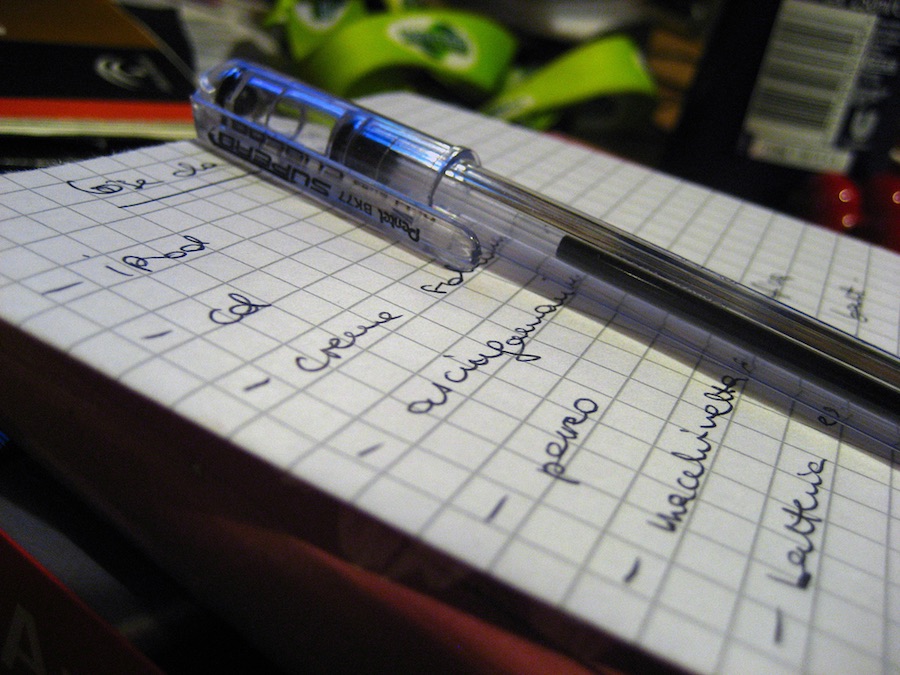Do you have tasks that you need to do again and again? If you do, how do you make sure that you do them correctly every time? One good solution, as it has been proven in many fields, is to use checklists.
The Checklist Manifesto by Atul Gawande is full of stories that show how useful checklists are. In fields like building construction, aviation, and medical, the usage of checklists has saved many lives. And in many other fields, it has helped people do things more efficiently and avoid costly mistakes.
The reason why checklists are good is simple: it’s easy for us to forget things. When you do something that involve multiple steps, it’s likely that you would forget one or two of them. Using checklists ensures that you won’t forget anything.
So, if you do something again and again, and want to do it right every time, use a checklist.
Besides helping you do your task correctly every time, here are some other benefits of using a checklist:
- You can save your brain power for more creative things
Since you don’t have to remember all the steps you need to take, you can use your brain power for something more creative. - You can save time
You don’t need to spend time remembering the steps, so you can devote the entire time on doing the task. - You can delegate more easily
If you ever want to delegate the task (for example, through outsourcing), your checklist will make it easier for you to do it. By giving the checklist to the person you delegate to, you can describe exactly what you want.
Now then, how should we create a checklist? Here are some steps I’d suggest:
- When you are working on the task, write down the steps you take. The result will be a draft of the checklist.
- The next time you do the task, compare the steps you are taking with what you already have in the draft. If some steps are missing, add them to the draft. You might also want to remove some steps that you think are unnecessary.
- After one or two iteration without any update, you can assume that the checklist is completed.
- Put the checklist in a place that’s easy to access, be it a text file, a Moleskine, or anything else you like. It’s now ready to use.
Though everyone’s situation is different, here are some things that you might want to create a checklist for:
- Morning routine
What do you want to do every morning to jump-start your day? - Daily routine
Do you have something that you want to do every day? What about weekly or monthly? - A frequent task in your work
Is there something you need to do frequently in your work? For instance, I have a checklist for processing guest posts submitted to this blog.
One thing to remember: your checklist doesn’t have to take the form of a list. One checklist I use every day is my Daily bookmark folder. It’s a bookmark folder in my browser (I use Firefox) that contain the sites I want to visit daily. Every day, all I need to do is opening the bookmark folder and it will automatically open all the sites I want. Simply by opening it I can be sure that I won’t miss anything.
What about you? Do you use checklists?
Photo by sunshinecity





Great points. I use check lists all the time and it helps so much. I like the point you used about saving brain power.
Yes, I like that too. Isn’t it nice that we can save our brain power for more creative things?
So true saving brain power is a great thing.
Great article Donald,
this reminds me of some wise words my father always tells me:
“The brain is for thinking, paper is for remembering”
He’s the master of writing things down and using checklists. Guess I should start taking this more seriously haha! 🙂
I like the quote 🙂 It nicely summarizes how we all should work.
I think the idea of capturing any thoughts / ideas / tasks is such an important one. It certainly frees you up to do more thinking and be creative. I use Evernote and find it invaluable for this.
I also like Evernote. In the past I used OneNote but these days I mainly use Evernote to capture ideas.
Thank both of you for that recommendation. During a recent visit with one of my physicians, we discussed the option of doing checklists. In fact, my doctor actually wrote out a prescription for me to do that and then provide her with an update during our next scheduled appointment.
I swear by checklists. The interesting thing is that checklists these days do not have to be just on paper as they can be electronic too. Same purpose as it feels good to cross off tasks done.
Yes. In fact, all my checklists are electronic.
I think as humans we tend to put too much pressure on the mind by trying to remember things. Writing things down or putting them onto some type of auto-pilot really saves some energy.
I agree with you. David Allen’s GTD really emphasizes this.
I also use checklist every day. I am applying Getting Things Done and for all my list I use a little checkbox before I start writing the next action. With this I can tick off the action after completion – very helpful for me.
Great article….I’m a recent follower of your site. It inspired to start one blog too..have a look at my site 🙂
NO, I don’t. I call them “to do” lists. LOL! They’re very helpful, they keep me sane and keep stress away. For many years now, I keep a daily list prepped the night before; and a weekly list that’s prepped every Sunday. Keeps things smooth-sailing all the time. So at the end of the day, if all items are crashed-out (as in “done”!), I feel so good about myself. 🙂
Hi,
Thanks for this great post. I was very skeptical about the idea for being an automaton by following a checklist or a schedule of all day, day or mounth. And then my life was a real impasse. I ignore what great things I did it and so for. Afte that I decided to get a plan of my live. I decided to savor my live by listing waht I did and what I want to do.
Now I am more happy and more self-confident with a clear timetable. I think I’m not completly organized but I hope be better. That’s why I’am here.
Thanks again for Donald and all commentators.
Donald, I like the article man. One way that I’ve utilized checklists in my life is by utilizing Nozbe. It’s both an app for browser on computer as well as iPhone and Android compatible. Essentially it is an electronic checklist for helping with daily tasks as well as for projects involving multiple people. Check it out, it’s saved me a bunch of time!
Thanks for the information, Conner!
Whenever he went on business trips, my Dad would always write down the items he would need to take. His checklist would include articles of clothing, types of clothing to take, and personal hygiene items, along with the work-related items he would need. Although I cannot be certain, I strongly suspect he also included lists of work-related issues that he either knew about ahead of time or at the very least he would make a note of to bring up during the trip. That way, he would ensure that nothing would be forgotten by him or left to chance.
That’s a good example of using checklists. Thanks for sharing, Tracey!